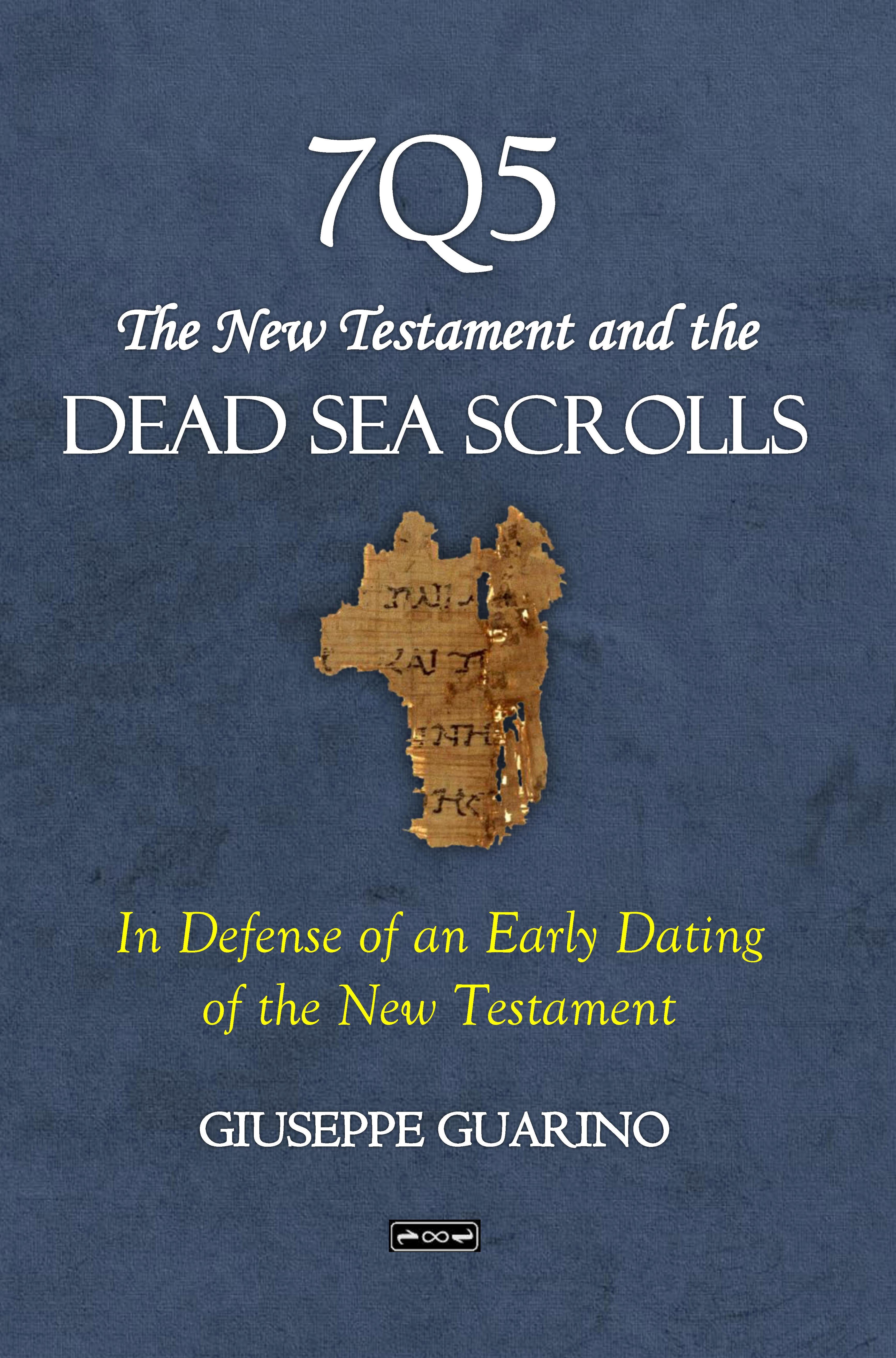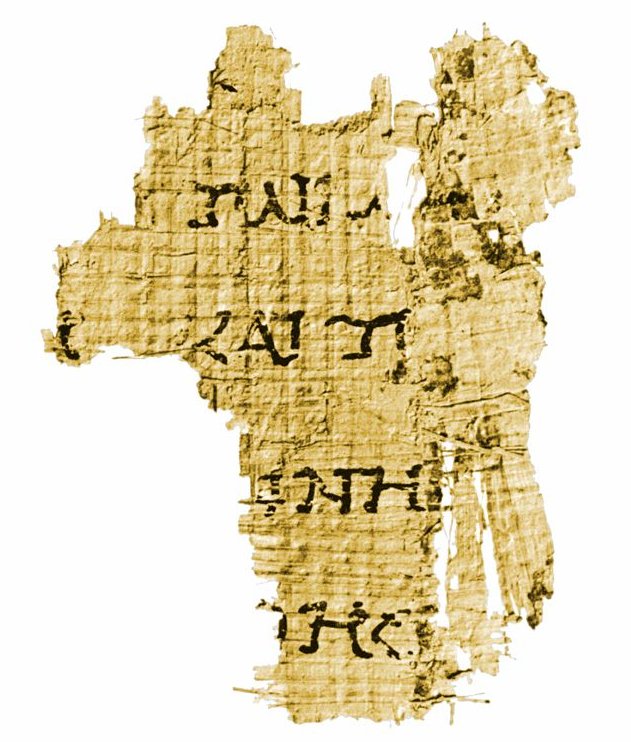 |
Click on the cover to buy the book
7Q5 The New Testament and the Dead Sea Scrolls by Giuseppe Guarino
The Dead Sea Scrolls were perhaps the most important manuscript finding of the twentieth century. 7Q5 is one of them: no 5 fragment in cave 7. It was in Greek.
The 18 papyri fragments of Cave 7 are visible in high definition quality on the official website: www.deadseascrolls.org.il
Sometimes evidence of the past may be huge, majestic, like the Egyptian pyramids. Other times it is all hidden in small fragments of papyrus. Then it depends on man’s deductive ability to reveal the truths hidden in the surviving evidence. The latter is the case with the manuscript fragment called 7Q5 – which stands for relic 5 of cave 7 in the Qumran site. Many have tried to understand what 7Q5 actually bears witness to. I am sure many have spent sleepless nights trying to understand if it is possible to prove what was the content of the original complete manuscript – I am one of them. I felt the need to find answers to the puzzling questions that 7Q5 arises and share them with others.

7Q5 is 3.9 cm high and 2.7 cm wide
Papyrology can turn such a little piece of evidence into a powerful witness
from the book
Chapter 4
7Q5 AND THE GOSPEL OF MARK AMONG THE DEAD SEA SCROLLS?
The Greek papyri fragment here in the picture is called 7Q5. It was catalogued number 5 among those manuscripts found in Qumran cave number 7.
It was originally part of a scroll written on only one side (recto).
20 Greek letters are visible. 10 are damaged. They are distributed on five lines.
Its maximum height is 3.9 cm. Its larger part measures 2.7 cm.
The fragment was at the Rockfeller Museum in Jerusalem but now it is property of the Israelian Antiquities Authorities.
I give the official websites to the readers so that they can see for themselves the beautiful pictures of this and other Qumran manuscripts.
http://www.antiquities.org.il/
http://www.deadseascrolls.org.il/
http://www.deadseascrolls.org.il/explore-the-archive/search#q=site:’Qumran,_Cave_7′
In 1972 an article was published in the magazine “Biblica”, where the scholar José O’ Callaghan set forth his theory that the remaining letters visible in 7Q5 were originally part of a manuscript containing the Gospel of Mark. He identified the 20 letters as part of the text found in Mark 6:52-53.
If a Gospel is actually among the Dead Sea Scrolls, this will influence other branches of Bible studies dealing with the origin of the Gospels, their possible dates of composition, or even lead to reconsider the significance of the scrolls themselves.
Most books on the topic, if not all, make it clear that there is no evidence of New Testament writings in the Qumran caves.
This opinion is challenged by the studies of Professor Carsten Peter Thiede, whom with excitement and very plausible suggestions, convincingly reiterated and, to my opinion, demonstrated the identification of 7Q5 with the gospel of Mark proposed by O’ Callaghan.
If the possibility of Christian manuscripts in cave no. 7 has been so strongly refused, much is due to the preconceived minds relying on the results of the studies of scholars who believe that a relatively late date must be given to the books of the New Testament.
The dates of composition of the books of the New Testament has been long debated. There is no consensus among scholars of different factions. The “traditional” dating is not supported by the intellectual circles and a much later date is usually attributed to most New Testament writings. But if O’Callaghan and his followers are right, the “modern” or “liberal” theories should definitely be revised in light of the new archeological and papyrological discoveries.
In support of O’Callaghan’s identification is the recent independent work of other Bible scholars which has led them to consider – or reconsider – the books of the New Testament to have been written at an earlier age than that believed and argued by most credited scholars.
In fact, it is not easy for some to be optimistic about the antiquity of the Gospels as we know them, notwithstanding the ancient witness of the Church for the antiquity and apostolic origin of the Christian Scriptures.
Ferdinand Rohrhirsch, professor at the University of Eichstatt, thinks and openly states that the voice of the opponents to the attribution of 7Q5, among whom is the credited textual critic Kurt Aland, is the result of prejudice and not of scientific observation: “…the hypothesis of O’ Callaghan is still standing, while all the refutations so far attempted have proven to be inconsistent or wrong.” Marco e il suo Vangelo, Atti del Convegno internazionale di Studi “Il vangelo di Marco”, Venezia, 30-31 may 1995, edited by Lucio Cilia, pag. 121.
